Not so long ago, QR codes were the wallflowers of the technology world, gathering dust in the shadows of more popular inventions. But thanks to Apple’s iOS 11 update, the QR code revolution was unleashed upon the masses.
Without the limitations of third-party apps, the native camera app became a portal to an exciting realm of digital encounters, unfurling a brand-new world of marketing possibilities.

And the pandemic only intensified the potential of QR codes. Nowadays, you can’t go anywhere without encountering these pixelated marvels. They’re plastered on product packaging, lurking on restaurant tables, dominating billboards, and even infiltrating your social media feeds.
But the power of QR codes goes far beyond mere information delivery. This unassuming invention is key to unearthing a treasure trove of digital marketing opportunities for businesses daring enough to wield its power.
In this blog post, we’ll explore the power of these versatile little squares and how businesses can use QR codes to create impactful digital marketing campaigns.
Want to receive updates? Sign up to our newsletter
Each time a new blog is posted, you’ll receive a notification, it’s really that simple.
What are QR Codes?
Before we dive into the myriad of possibilities that QR codes offer, let’s quickly recap what these little squares are and where they come from.
QR codes, or quick response codes, are like traditional barcodes’ sleekier and savvier siblings. Like a barcode, QR codes are visual symbols that can store information, showing how QR codes work. However, unlike their linear counterparts, QR codes come in two-dimensional squares and can contain much more data.
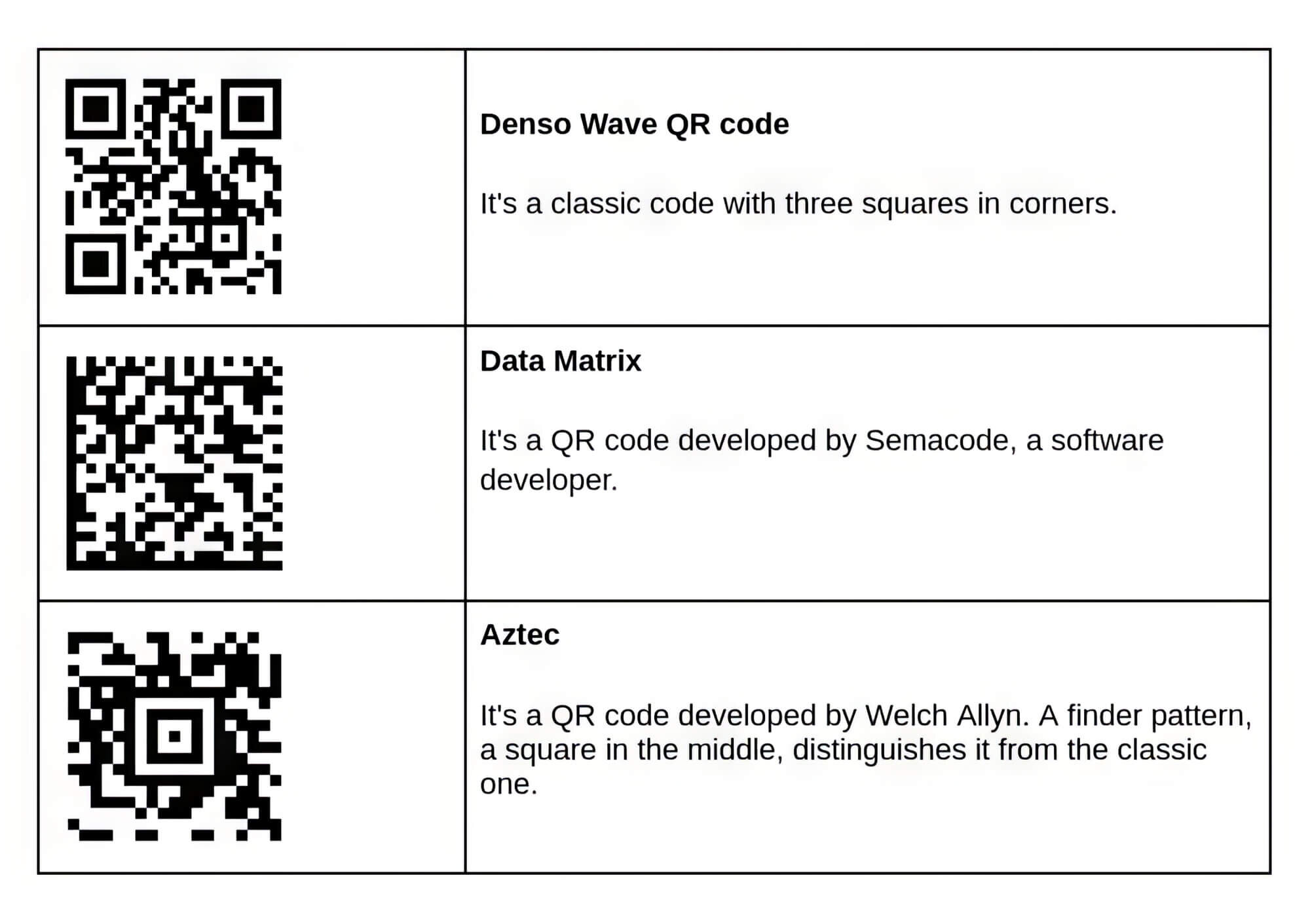
Initially invented by clever minds at Denso Wave, a Toyota subsidiary, QR codes were born out of the need for an accurate vehicle and parts tracking system. These pixelated squares quickly outgrew the confines of their industrial roots. They spread into the mainstream, including various social media platforms, giving rise to a diverse range of QR code uses that we know today.
Types of QR Codes
The world of QR codes can be divided into two main categories: static and dynamic. Understanding the differences between these two variations is essential for businesses seeking to create impactful digital marketing campaigns.
Static QR Codes
A static QR code is intended to hold unchangeable information that remains fixed once the QR code has been produced. These codes are handy for personal purposes, such as linking to contact details or website URLs.
They are also ideal for generating large batches of codes for employee IDs, event badges, product documentation, etc. However, due to their unalterable nature, Static QR codes are not well suited for digital marketing campaigns as they can’t be used to track metrics or be edited post-creation.
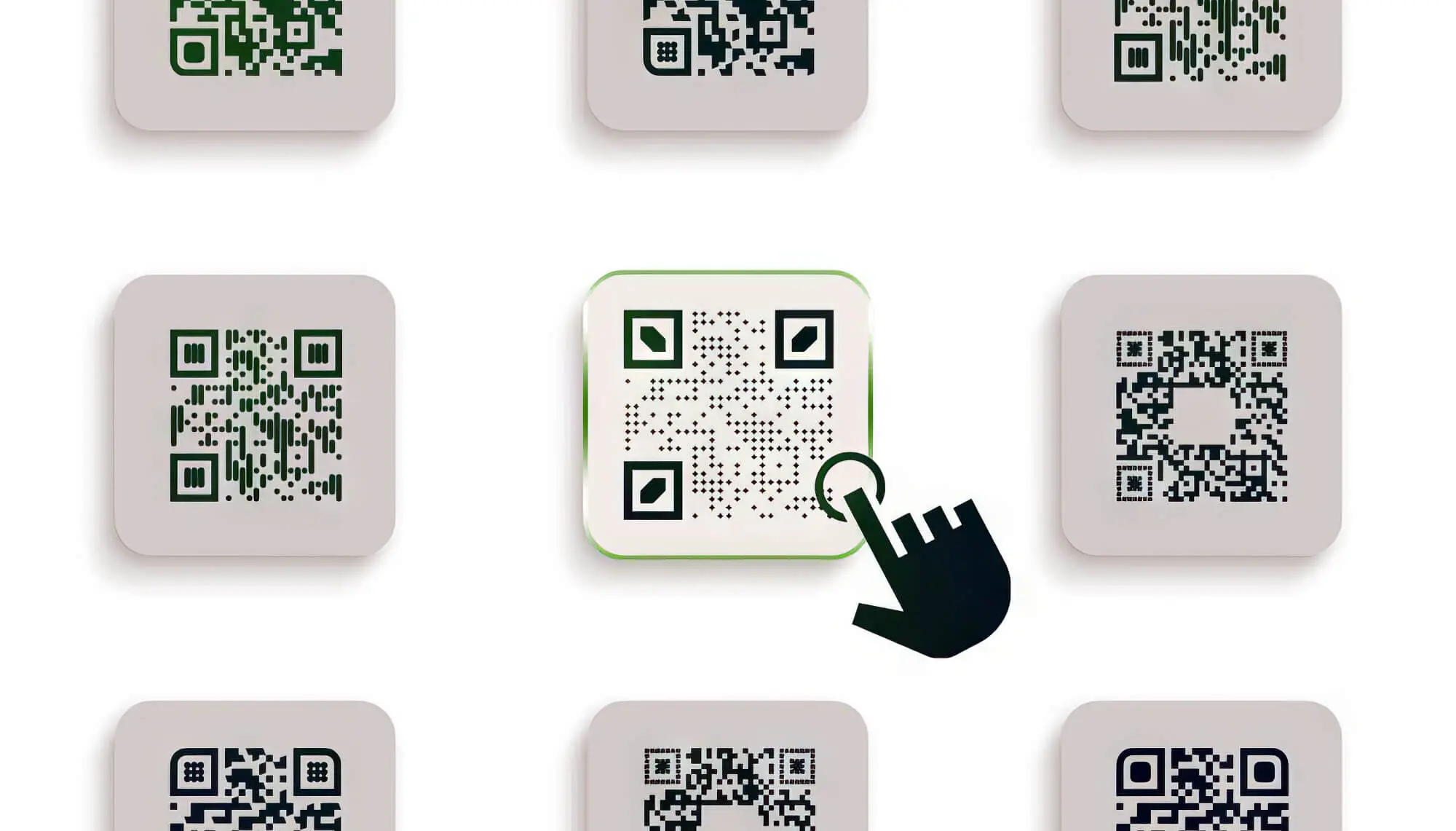
Dynamic QR Codes
On the contrary, dynamic QR codes offer the flexibility to update, edit, and change the QR Code’s type as needed, like in gathering customer reviews or feedback, making them ideal for business and marketing purposes. Plus, the size and complexity of a static QR code can increase with the amount of information you input.
However, with a dynamic code, the content presented to scanners is not directly embedded in the code itself. Instead, it is associated with a short redirection URL. This approach keeps the code compact and facilitates its integration into marketing materials.
Dynamic codes are also capable of tracking advertising performance. You gain access to detailed information such as the time, location, and device used for each scan, which can be used to optimise your campaigns and measure their impact.
Rise of QR Codes in Digital Marketing
With their newfound popularity, QR codes have gone from background extras to becoming the leading stars of their marketing campaigns. But how did these codes make such a giant leap? The following are some reasons why QR codes have risen to prominence among digital marketers:
Speed and Convenience
QR codes epitomise speed and convenience, ushering in an era of frictionless access to digital content. Using conventional methods, it takes a user several clicks, type-ins, and page redirects to unlock desired content. But with QR codes, this whole process is compressed into a single step, providing users instant access to desired content through a simple code scan.
Take Coinbase’s 2022 Super Bowl ad, for instance. This 60-second ad spot featured a floating QR code as an entry point to Coinbase’s $15 Bitcoin giveaway. As customers scan the QR code, all viewers must do is instantaneously redirected to Coinbase’s website.
The sheer speed of this process proved so influential that it briefly crashed the exchange’s app due to an influx of traffic. Coinbase reported more than 20 million visits to its landing page within a single minute, resulting in engagement metrics that were six times higher than previous benchmarks. Now, if the ad had featured a standard URL that viewers had to type in, it’s doubtful that it would have seen such an enthusiastic response.
Element of Interactivity
Including QR codes has introduced a crucial aspect of interactivity to a world that has grown increasingly numb to conventional, passive advertising methods. People have become accustomed to simply viewing adverts without engaging, but QR codes break the fourth wall and invite viewers to interact with the brand’s message.
This elevated level of involvement can have a profound and enduring effect on customers, ultimately bolstering brand message recognition. Some 79% of marketers have reported increased message retention when interactive elements such as QR codes are added to their campaigns. Burger King recently utilised this interactive potential to great effect with their immersive sweepstakes during the VMAs.

The campaign encouraged viewers to download the Burger King app, register if they hadn’t already, and scan QR codes that appeared throughout the awards show. Scanning the QR codes unlocked various offers, including a free Whopper sandwich with a $1 purchase through the BK App and a chance to win a year’s supply of free Whoppers and tickets to the 2021 Video Music Awards.
Data Capture and Tracking
For marketers, customer data, especially email addresses, is essentially akin to liquid gold. It gives them the power to build and refine personas, identify trends, and tailor their campaigns to hit the bullseye with their target audience.
QR codes offer marketers a unique opportunity to unearth this gold without resorting to sketchy third-party data sources, which is becoming increasingly crucial in the wake of Google’s decision to say goodbye to third-party cookies.
Whole Foods is a prime example of a business that leverages QR codes to gather data. At the checkout counter, customers can scan a QR code if they’re members of Amazon Prime and get a 10% discount. This simple move rewards loyal customers and helps Whole Foods gather valuable data on consumer buying patterns.

But beyond data gathering, QR codes also offer marketers a tangible way to measure the impact of their campaigns through marketing data analysis.
Marketers can gain invaluable insights into how their campaigns perform in the wild by monitoring the number of QR code scans, click-through rates, and subsequent customer actions.
Print and Digital Synergy
In the past, print and digital marketing media lived in two different worlds, rarely ever crossing paths. With their advanced features, the advent of QR codes has transformed this by creating a bridge between these worlds, allowing them to work in tandem as part of a single campaign.
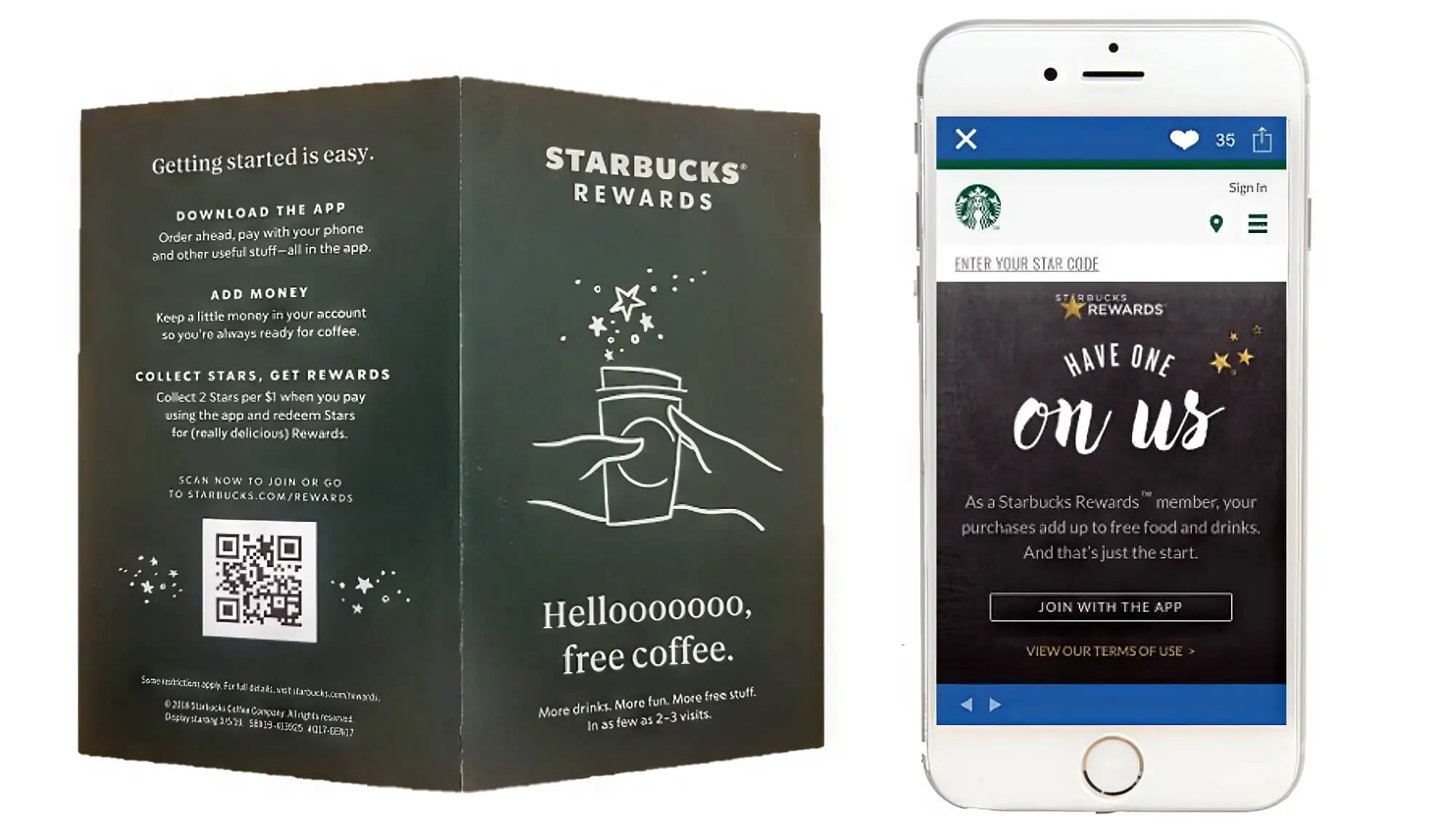
Starbucks quickly incorporated QR codes into their marketing strategy, becoming an early adopter. In 2017, the coffee giant ran an initiative incorporating QR codes into its promotional campaigns, like print ads with People magazine and outdoor ads in major cities of the US, to direct customers to special offers.
These QR codes served as entry points to unlock exclusive coffee discounts and promotional offers. This combination of print and digital media allowed Starbucks to create a cohesive and engaging campaign that maximised the potential of both channels.
Additional Perks of Using QR Codes
If the above has not convinced you to add QR codes to your digital marketing mix, here are a few more benefits of using QR codes that should do the trick.
- Cost-Effective: Unlike other digital marketing tactics, like email marketing, QR doesn’t require a hefty budget or an army of creative professionals to produce. All you need is a unique concept and a robust QR code generator, and voila—you have a fully operational code ready to incorporate into your marketing strategy.
- Low Maintenance: Unlike running paid campaigns or maintaining a website, QR codes require little upkeep. Once they are created and deployed, all that is left to do is monitor the analytics and ensure your codes still function as intended.
- Accessibility: QR codes are extremely accessible since all you need to scan is a QR code reader app, which is pre-installed on virtually every modern mobile device. This makes it easy for anyone to access the content hidden behind a QR code, regardless of their technical know-how or device capabilities.
Limitations of QR Codes
While QR codes have undoubtedly revolutionised the digital marketing landscape, it’s crucial to acknowledge that even the mightiest inventions have limitations. In this section, we’ll explore the boundaries of QR codes, shedding light on their constraints and providing a balanced perspective on their usage:
Adoption and Awareness
QR codes may be omnipresent, but only some know how to scan them or what they offer.
While smartphone adoption is widespread, some individuals may not have access to QR code scanning capabilities or lack the knowledge to utilise them effectively. This can create a barrier to entry for some potential users, limiting the reach and impact of QR code campaigns.
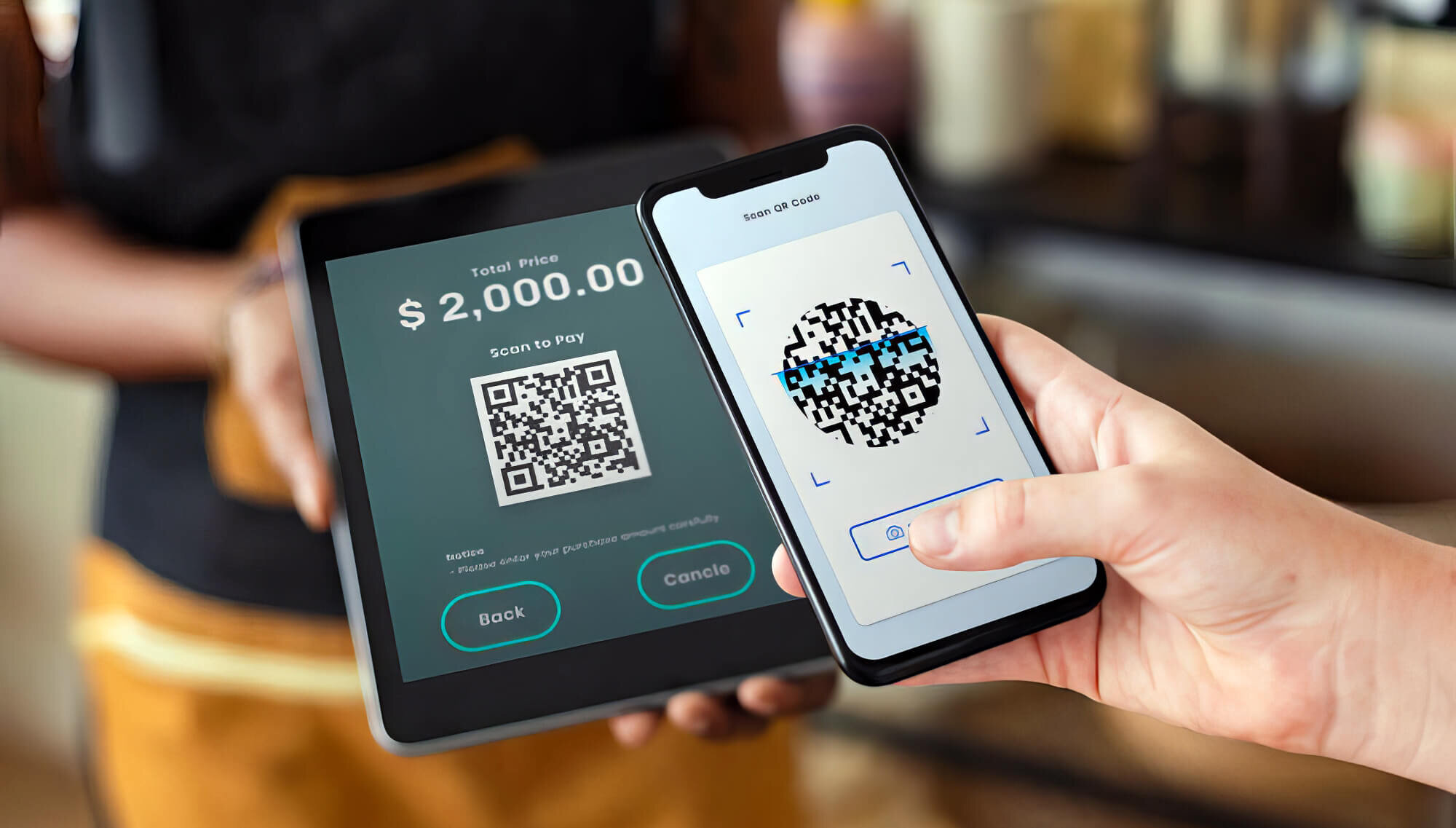
User Distrust and Perception
Though QR codes have gained significant traction in the Asian markets, they still experience a measure of distrust in the West. Many users may associate QR codes with spam and intrusive marketing tactics, making them reluctant to scan them.
This can impede the success of your addressing this challenge, fostering trust with users by ensuring transparency and offering educational content or exclusive discounts as incentives to scan.
This approach gives users a reason to engage with your QR code and helps them perceive it as a beneficial interaction rather than an intrusive marketing tactic.
Security Concerns
The detractors of QR codes often point to their lack of security as their primary downfall. The open-source nature of QR codes makes them vulnerable to malicious manipulation and exploitation. Without robust security protocols, hackers can effortlessly seize control of your code and substitute it with harmful content.
Consequently, it is imperative to establish rigorous security measures and consistently monitor your QR code to guarantee a secure and efficient digital marketing campaign.
Wielding the Might of QR Codes for Digital Marketing
QR codes have enjoyed a meteoric rise in the past few years, showcasing the benefits of QR codes, but these pixelated squares are still in their relative infancy. And a world of possibilities is out there, just waiting to be explored. Here are some of the most interesting use cases of QR codes in digital marketing:
L’oreal Paris: Capturing Customers Stuck in Traffic
Knowing that customers stranded in traffic can do little besides scroll through their phones, L’Oreal Paris made a brilliant move to capture the attention of its captive audience.
The brand teamed up with Glamour magazine and plastered QR codes in taxis across major US cities, letting their passengers unlock product videos and store pages.
And in five days, the Mobile Taxi Shop achieved extraordinary feats, leaving an indelible mark on both L’Oreal and the passengers it touched. The campaign ignited an 80% surge in app downloads as eager consumers sought to explore the product line and benefit from exciting offers.
The feedback from participants not only resounded with enthusiasm and excitement but also demonstrated an enhanced customer experience. A staggering 94% of surveyed individuals agreed that L’Oréal and Yves Saint Laurent were trailblazers, true industry innovators.
The demand for more shopping experiences within NYC taxis was overwhelming, with nearly all participants expressing a desire for future encounters.
Cygames: Taking Digital Marketing to the Skies
In a dazzling spectacle that left viewers in awe, Cygames, a Japanese gaming brand, took the first-anniversary celebration of its smash-hit video game Princess Connect Re: Dive’ to new heights—literally.
Commanding a battalion of 1,500 drones, Cygames orchestrated an electrifying aerial battle between the game’s beloved characters, mesmerising its audience with an unforgettable show. But the real showstopper came after the skirmish, as the drones converged to form a colossal QR Code suspended in the sky.
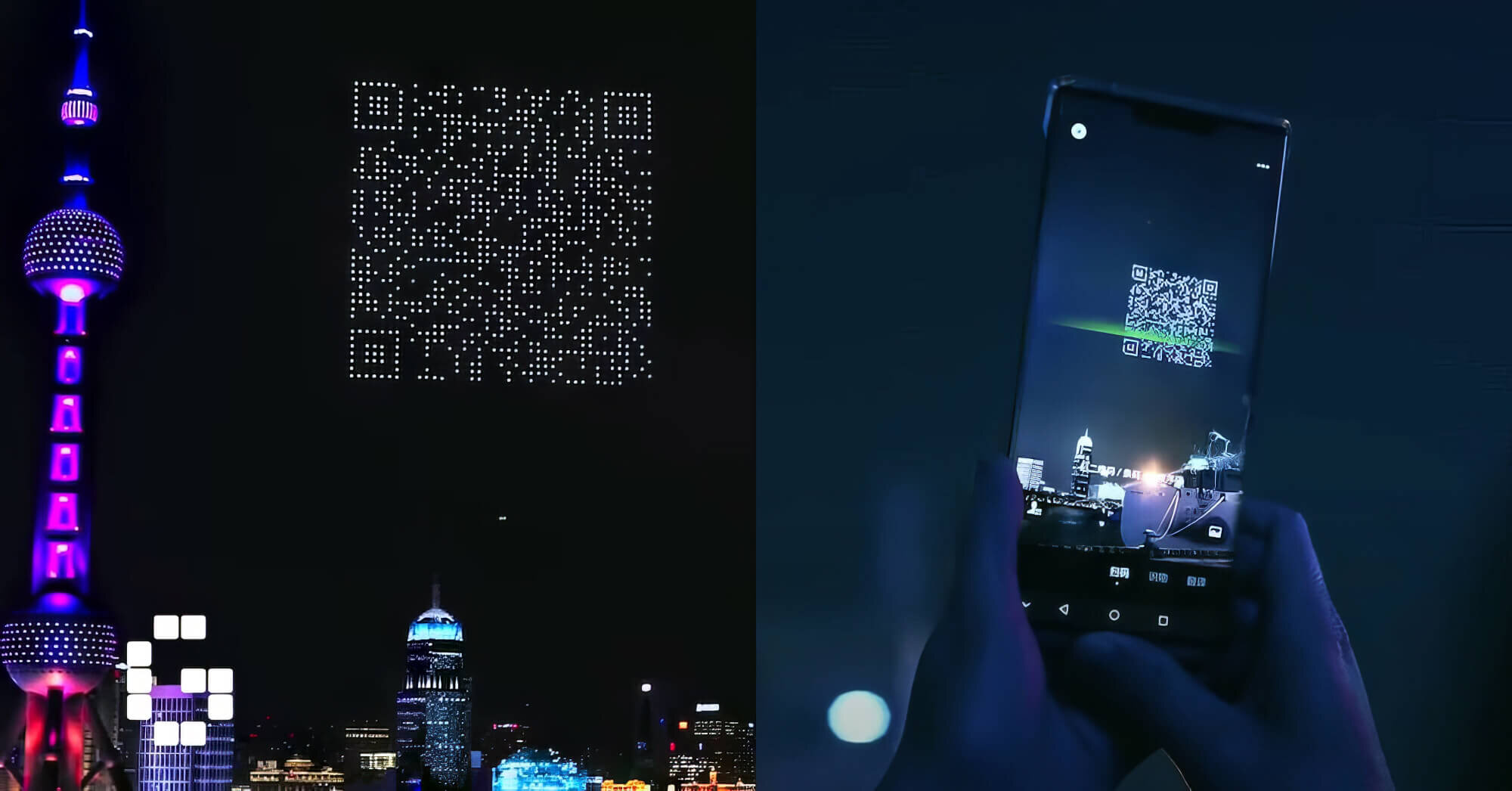
By scanning the code, spectators were directed to web pages where the secrets of ‘Princess Connect Re: Dive’ awaited their discovery. The reverberations of this marketing extravaganza rippled far and wide, attracting the attention of thousands and stirring up immense excitement.
The images of the drone-woven QR code lit up social media, with viewers gushing over the creativity and ingenuity of Cygames’ campaign.
Louis Vuitton: Fusing Art and Technology
The French fashion house Louis Vuitton made a daring move when they partnered with celebrated Japanese artist Takashi Murakami to create a range of custom QR codes in his signature style.
Limited to Japan, this innovative campaign invited customers to scan the codes and explore the exclusive line of handbags co-designed by Murakami and Louis Vuitton.
The ad creative interwove the playful and vibrant imagery synonymous with the artist’s psychedelic anime expertise into the versions of the machine-readable codes for Louis Vuitton, astonishingly preserving their functionality.
The codes’ design literally mirrored the handbag collection’s aesthetic, offering customers a tantalising glimpse into what they could expect once they scanned the codes.
Levis: Thinking Beyond the Obvious
In 2016, Levi’s found themselves grappling with a gnarly brand perception problem among the hip and happening Chinese crowd. Lee’s rival had usurped its denim throne in China’s lower-tier cities.
OMD China and Levi’s staged a daring marketing strategy to regain their top spot. They relinquished their hold on ad creation and handed the reins to the people they sought to enchant—the Chinese Millennials. Dubbed ‘ We are First,’ this ingenious campaign encouraged folks to craft their advertising magic.
Consumers could create original straplines, pairing them with their Levi’s images on QQ Music and sharing their creations with the world. Additionally, the campaign also urged people to take part in creating their own Levi’s posters, showcasing their individuality through striking poses. And with a simple scan of a QR code on their phones, these posters instantly became shareable, extending the reach of their unique expressions.
The result? In a mere fortnight, Chinese millennials birthed a staggering 2.6 million Levi’s advertisements! The campaign also garnered some 2.9 million consumer engagements in the form of likes, forwards, comments, and shares, making it a thundering success.
Mastering QR Code Marketing
Now that you know why QR codes are an invaluable asset in the digital marketing toolbox, let’s explore some marketing strategies to ensure your campaigns get maximum mileage out of this tech:
Mind Your Code’s Location
Slapping your QR codes on any random corner of your marketing collateral without giving it a second thought is a surefire way to derail your campaigns. Instead, strategically position it where it will catch the eye but not overwhelm the design of your collateral.
When deciding its ideal location, consider factors like visual flow, proximity to relevant content, and your QR code’s overall size and scale.
Compel Your Audience to Scan
Don’t settle for lacklustre calls to action that blend into the background. Infuse your QR codes with the magnetic energy of compelling calls to action that command attention and spur users to act. Keep the wording concise for your call to action, but pack it with enough punch to make people sit up and take notice.
You can also instil urgency in your CTAs with words like “Now” and phrases like “Don’t miss out!” or use attractive incentives to bring them to the forefront.
Crack the Code with A/B Testing
Don’t leave your QR code campaigns to chance. Put them through rigorous testing cycles to optimise the results, much like you would for any other aspect of your digital marketing. Leverage A/B testing techniques to shoot off different versions of the same QR code campaign and measure which produces better engagement metrics.
This data-driven approach will empower you to hone in on the best possible version of your QR code campaign.
Customise to Reflect Your Branding
Move beyond the conventional black-and-white format of QR codes and add a touch of personality to them. Incorporate elements of your brand’s colour scheme, logos, or fonts to create QR codes that are as unique as they are eye-catching.
These visual cues will help create instant recognition and make it easier for people to connect the dots between your brand and QR code campaigns. Just make sure that the code remains legible and scannable even after you’ve added these custom elements.

Manage Your Files Better
In the fast-paced world of digital marketing, chaos is the enemy of success. Avoid letting your QR code campaigns descend into a jumble of unorganised data and files.
Take the time to implement a solid document management system from the start that will keep your campaigns running like clockwork. This way, you can store and locate the right files and information at the right time with minimum fuss.
Ensure Quality Every Step of the Way
No matter how meticulously designed digital campaigns may be, they risk unravelling if unresolved technical glitches and bugs linger below the surface. Before launching your QR code campaigns, run thorough quality assurance tests to ensure they are bug-free and optimised for different screen sizes and platforms.
This preemptive measure will help you ward off any potential technical and usability snags that could sink your campaigns.
Get an Expert On Board
If you feel out of your depth or need more bandwidth to take on a QR code campaign, consider hiring a marketing consultant familiar with the process. But exercise caution when choosing your expert. Look for someone with industry knowledge that aligns with your brand’s vision and values.
Just like a life coach’s unique philosophy shapes their coaching approach, the perspective of the marketing consultant you work with will profoundly impact the trajectory of your future QR tech projects. So, choose wisely.
The Future of QR Codes in Digital Marketing
QR technology has forever changed the digital marketing landscape, and its influence will continue to grow. As tech sophistication broadens and consumers become more tech-savvy, expect to see QR codes popping up in all sorts of new and innovative ways.
The following are some potential QR code trends to keep an eye out for in 2025:
- Augmented Reality: The mind-bending possibilities of merging our real and virtual worlds have only just begun to be explored. The marriage of QR codes and AR technology will open up a whole new world of interactive and immersive advertising experiences.
- Geo-location Targeting: By fusing geo-location technology with these pixelated wonders, businesses can direct users within a specified radius to their business location and tailor content to them. This strategy can be used to promote local stores and introduce shoppers to new products nearby.
- Social Media Integration: QR codes have already proven their worth in connecting users to social media pages and other digital destinations. As the scope of what can be achieved through QR codes grows, businesses can use them to facilitate more seamless social media sharing and up the ante on user-generated content and hashtag-based campaigns.
- Enhanced Security: QR code generators are evolving to incorporate encryption techniques, digital signatures, and authentication protocols to address increasing security concerns surrounding QR tech. These advancements will further enhance the trust and reliability of QR codes in various applications.

Embrace the QR Code Revolution
From the shadows of obscurity to the spotlight of innovation, QR codes have proven their mettle as a powerful component of a digital marketing strategy.
With the right strategies and creativity, businesses can use them to open up new frontiers for customer engagement and interaction.
So, seize the moment, embrace the QR code revolution, and unlock the boundless potential that awaits.






